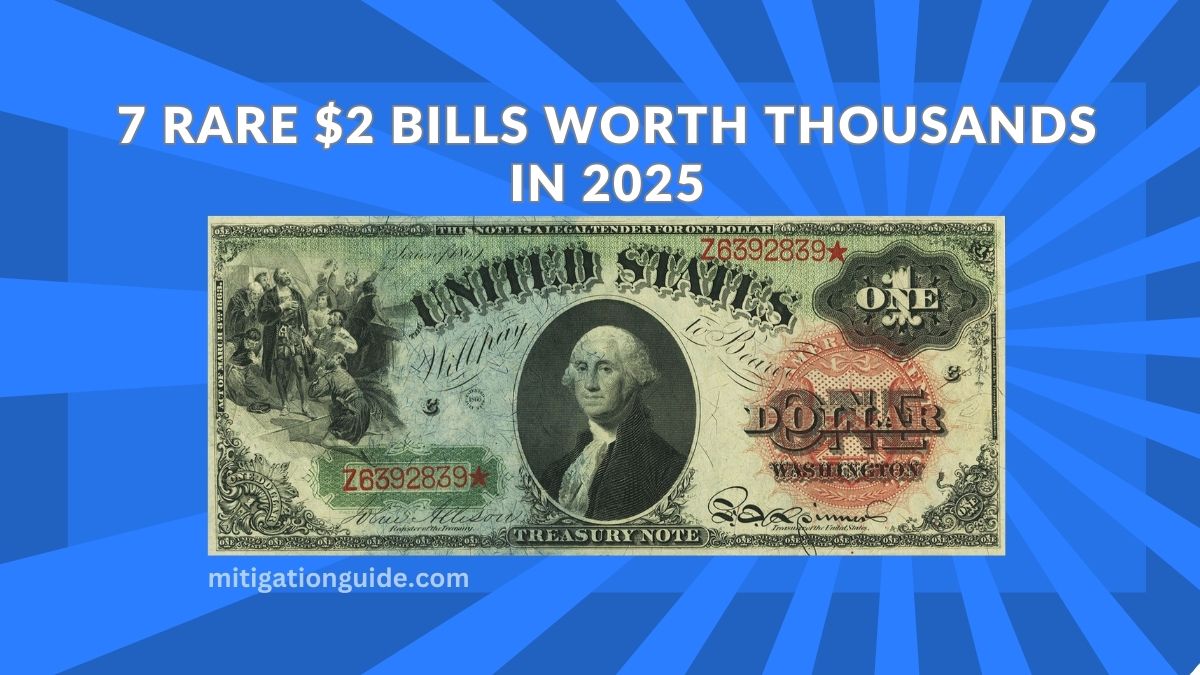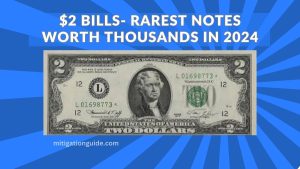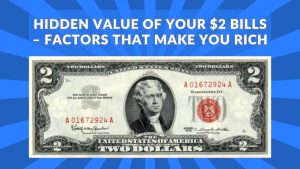Many people overlook the humble $2 bill, assuming it’s just another piece of currency with minimal value.
However, certain $2 bills possess unique characteristics that make them highly sought after by collectors, potentially fetching sums far exceeding their face value.
Factors such as specific serial numbers, printing errors, and historical significance can elevate the worth of these notes. This article delves into seven particularly valuable $2 bills to watch for in 2025.
Why Are Some $2 Bills More Valuable?
The value of a $2 bill is influenced by several key factors:
- Serial Numbers: Unique sequences, such as low numbers (e.g., 00000001), ladders (e.g., 12345678), or repeaters, can significantly increase a bill’s value.
- Printing Errors: Misprints, including misaligned seals, double serial numbers, or ink smears, are rare and highly prized by collectors.
- Star Notes: Identified by a star (★) next to the serial number, these bills were printed as replacements for defective ones and are generally rarer than standard issues.
- Age and Condition: Older bills, especially those in uncirculated or pristine condition, tend to be more valuable due to their scarcity and historical significance.
Seven Valuable $2 Bills to Look For
Below is a table summarizing seven $2 bills that are particularly valuable:
| Bill Type | What to Look For | Estimated Value (USD) |
|---|---|---|
| 1928B Red Seal Star Note | Red seal with a star (★) in the serial number | Circulated: $100 – $300; Uncirculated: Up to $1,000 |
| 1869 Rainbow Note | Multicolored design with a red Treasury Seal | Circulated: $500 – $1,000; Uncirculated: Up to $2,500 |
| 1890 Treasury Note | Large brown Treasury Seal | Circulated: $1,000 – $3,000; Uncirculated: Up to $4,500 |
| 1976 Low Serial Number | Serial numbers starting with multiple zeros (e.g., 00000001) | Varies; Low numbers can fetch significant premiums |
| 1976 Printing Error | Misprints like double serial numbers or misaligned seals | Circulated: $500 – $800; Uncirculated: Up to $1,500 |
| 1976 Ladder Serial Number | Sequential serial numbers (e.g., 12345678) | High premiums depending on condition and rarity |
| 1976 Star Note | Star (★) in the serial number | Circulated: $100 – $300; Uncirculated: Up to $500 |
Detailed Descriptions
1. 1928B Red Seal Star Note
The 1928B series features a distinctive red seal. Notes with a star (★) in the serial number were replacements for defective bills, making them rarer and more valuable.
In circulated condition, these notes can be worth between $100 and $300, while uncirculated examples may fetch up to $1,000 .
2. 1869 Rainbow Note
Known for its multicolored design, the 1869 “Rainbow Note” is a collector’s favorite. Featuring a red Treasury Seal, these notes are highly sought after. Circulated versions range from $500 to $1,000, whereas uncirculated notes can command up to $2,500 .
3. 1890 Treasury Note
The 1890 $2 bill is notable for its large brown Treasury Seal. These notes are scarce, with circulated conditions valued between $1,000 and $3,000. Uncirculated specimens can reach up to $4,500 .
4. 1976 $2 Bill with Low Serial Number
Reintroduced in 1976 for the U.S. Bicentennial, $2 bills from this series with low serial numbers (e.g., 00000001) are particularly valuable.
The value varies significantly based on the exact number and condition, with some fetching substantial premiums .
5. 1976 $2 Bill with Printing Error
Printing errors, such as double serial numbers or misaligned seals, make these bills unique. In circulated condition, they can be worth between $500 and $800, while uncirculated examples may fetch up to $1,500 .
6. 1976 $2 Bill with Ladder Serial Number
Bills with serial numbers in sequential order (e.g., 12345678) are rare and highly prized. Depending on condition and exact sequence, these notes can command high premiums .
7. 1976 $2 Star Note
Star notes from the 1976 series, indicated by a star (★) in the serial number, were printed as replacements for defective bills. Circulated versions are valued between $100 and $300, while uncirculated notes can be worth up to $500 .
While the $2 bill remains a lesser-seen denomination in everyday transactions, certain editions hold significant value for collectors.
By examining serial numbers, seals, and potential printing errors, individuals may discover that their $2.
FAQs
What makes a $2 bill valuable?
Unique serial numbers, printing errors, star notes, and older issues increase a bill’s value.
How can I tell if my $2 bill is rare?
Look for low or patterned serial numbers, red seals, stars (★), or unusual printing errors.
Are 1976 $2 bills worth anything?
Most are worth $2, but rare ones with special serial numbers or errors can be worth hundreds or more.




